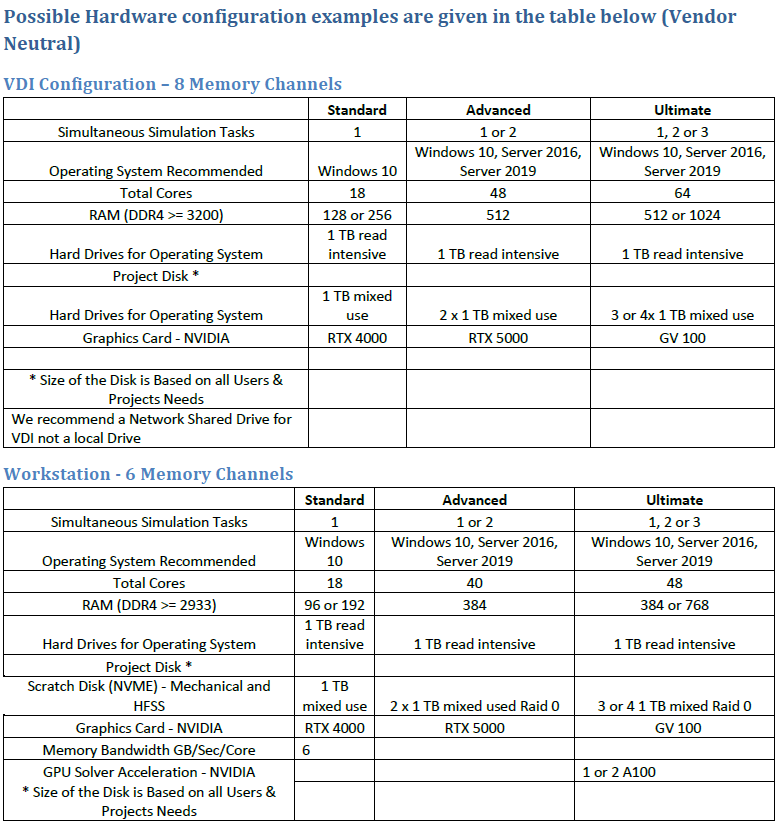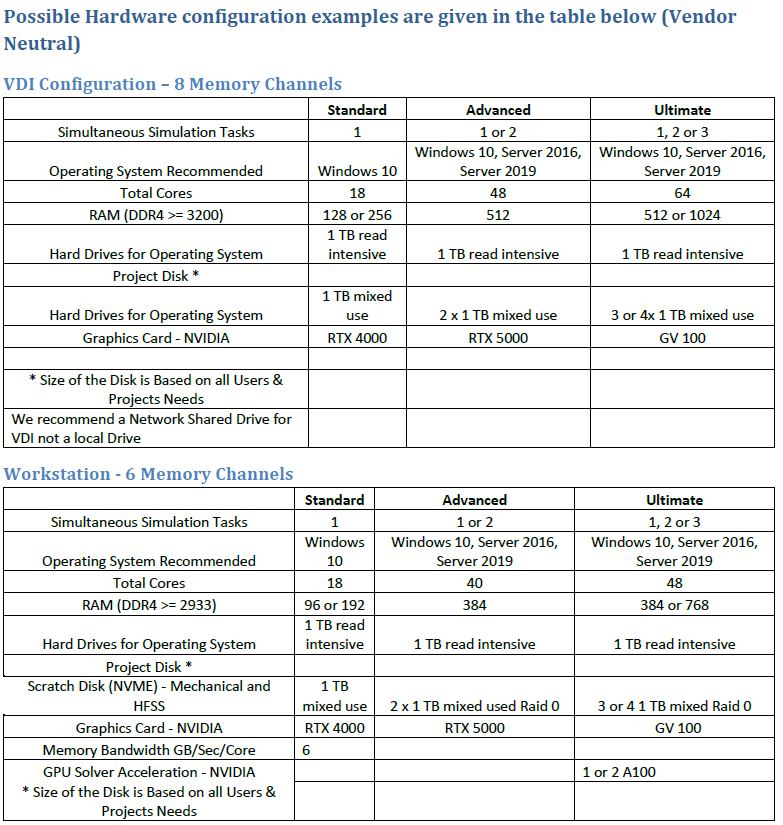TAGGED: maxwell3d, pc, simulation-problems, specifications, steady-state-thermal
-
-
January 26, 2022 at 3:20 pm
hani.sadek_i
SubscriberHello,
I am having a hard time running Maxwell 3D simulation and steady-state thermal analysis for medium voltage induction motor.
The problems are:
-The maxwell 3D file is huge and is taking days to finish simulation (although I am only simulation 1/16 partition)
-The steady-state thermal is not opening when I import the data to it.
I tried using the PC we have in the Lab and I also tried running it on the HPC that we have.
I was wondering if getting a PC with faster processing power could solve the problems.
The PC I am considering now is Dell precision tower 5820 Tower data science workstation.
it has the below specs:
-Intel Xeon processor W-2295(18C, 3.0 GHz 4.6Ghz Turbo HT 24.75 MB(165W))
-Nvidia Quadro RTX6000,24 GB,4DP,VirtualLink (XX20T)
-512 GB 8x64GB DDR4 2933 RDIM ECC Memory
-M.2 2TB PCle NVMe Class 40 Solid State Drive
Kindly let me know if this would be a good choice for running the above-mentioned simulations.
Thank you in advance.
February 8, 2022 at 8:55 amNKC
Forum Moderator
Here are some standard PC recommendations from Ansys. How fast your simulation gets completed is highly dependent on how big is your model and how you mesh it.

For efficiency, HFSS needs at least one host CPU core for each PCIe GPU. So, for 8 GPUs it needs 8 cores minimum.
As a general guideline for most applications, scalability will saturate quickly for more than 32 cores in a single machine.
How the GPUs are used depends on the HFSS solver. For example, for HFSS Transient the solver will first use all GPUs for solver tasks and the remaining tasks will use multi-core CPUs. The other solvers have a similar logic. In general, the solvers will try to maximize GPUs usage when GPU acceleration is enabled.
The following guidelines are a viable choice:
ÔÇó 2x 16-core Intel Processors at 2.8-3.1GHz.
ÔÇó ANSYS does not recommend AMD processors due to the lack of optimized AMD math library support.
ÔÇó AMD math library Support tentatively scheduled for HFSS 2022R2
Electronics - GPU and CPU - General Guidelines:
ÔÇó Several Ansys Electronics Desktop solvers can benefit from GPU acceleration:
ÔÇó HFSS frequency domain, transient, and SBR+ solvers.
ÔÇó HFSS 3D Layout for matrix solves and eye analysis.
ÔÇó Maxwell 3D eddy current matrix solves.
ÔÇó Circuit Design for eye analysis.
ÔÇó Circuit Netlist for eye analysis.
ÔÇó EMIT
GPU selection is based on the type of solve
ÔÇó SBR+ solvers can benefit from single-precision GPU's with higher memory bandwidth, such as NVIDIA RTX series.
ÔÇó All other solvers require GPU's that are capable of double-precision floating-point calculations, such as NVIDIA A100 or V100 or P100 series.
ÔÇó If installing multiple GPU's make sure all GPUs are from the same series and as adequate level CUDA installed and GPU's set to computational mode
ÔÇó PCIe4
ÔÇó CPU RAM at least 2x of the accumulated GPU RAM
ÔÇó Enough power from PSU
Hard Drives (See additional information below based on the solver you will be running)
ÔÇó SSD NVMe ÔÇô 2 x 2TB for 4 TB of off-core additional memory/storage
ÔÇó Local disk is recommended for the solver for temporary file I/O during solves.
NOTE: Ansys recommends at least one drive for boot and applications (SSD) and at least one drive for solving M2, NVMe drives


 Platform Support and Recommendations | Ansys
Platform Support and Recommendations | Ansys
Regards Navya
Viewing 1 reply thread- The topic ‘Ansys Maxwell 3D simulation and Steady State Thermal’ is closed to new replies.
Ansys Innovation SpaceTrending discussionsTop Contributors-
3572
-
1188
-
1076
-
1063
-
952
Top Rated Tags© 2025 Copyright ANSYS, Inc. All rights reserved.
Ansys does not support the usage of unauthorized Ansys software. Please visit www.ansys.com to obtain an official distribution.
-











